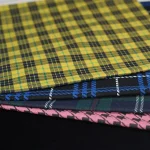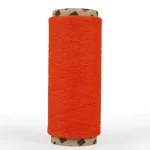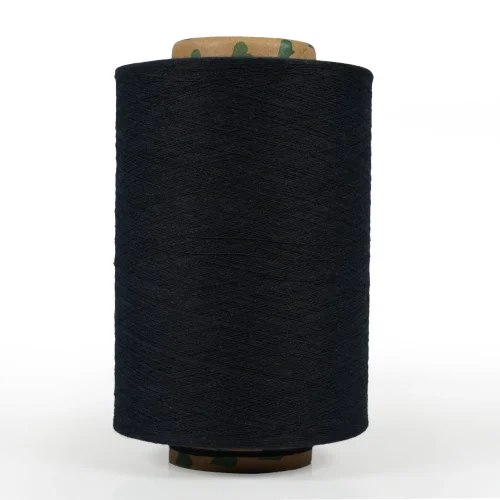
The Hidden Hero of the Fashion Industry: Carbon-Reducing Regenerated Yarns
3 May 2025
The Recycled Yarn Revolution for Sustainable Fashion
8 May 2025Recycled yarns merge sustainability with aesthetic value, offering designers unique opportunities. Produced by Seryaman Textile in more than 99 colors and counts from Ne 6/1 to Ne 30/1, these innovative materials stand out with melange effects, natural color transitions, and advantages for inter-seasonal use. In addition to eco-friendly production processes, they bring creative design possibilities to knitted fabrics, adding value to the textile sector.
As sustainable solutions gain increasing importance in the textile industry, recycled yarns stand out for both their environmental benefits and creative opportunities. These innovative materials go beyond simply being made from reprocessed textile waste—they offer designers and manufacturers unique color alternatives and design possibilities. Today, the fashion and textile world is in search of products that are not only eco-friendly but also aesthetically appealing.
This article explores the wide color range offered by recycled yarns and the advantages they bring to the design process. We will particularly examine the recycled yarn collection offered by Seryaman Textile, featuring more than 99 color options and yarn counts ranging from Ne 6/1 to Ne 30/1. We will also delve into how these yarns contribute to the sustainable fashion movement and expand creative potential.
The Power of Color Variety in Recycled Yarns
 Unlike conventional yarns, recycled yarns provide a broader spectrum of natural colors. Through the collection and processing of textile waste in different colors, various tones can be achieved without the need for traditional dyeing processes. Additionally, modern technologies allow for traditional dyeing techniques to be applied to these fibers.
Unlike conventional yarns, recycled yarns provide a broader spectrum of natural colors. Through the collection and processing of textile waste in different colors, various tones can be achieved without the need for traditional dyeing processes. Additionally, modern technologies allow for traditional dyeing techniques to be applied to these fibers.
Seryaman Textile adopts a pioneering approach in this area, producing recycled yarns in more than 99 colors. This wide palette enables designers to expand their creativity through unique color alternatives, ranging from natural and pastel tones to vibrant and bright hues.
Blended Color Yarns and Design Benefits
One of the most exciting features of recycled yarns is the melange effect achieved by blending fibers of different colors. This effect creates yarns with depth and texture instead of flat, uniform shades. Designers can use these blends to give even plain fabrics a dimensional look.
Blended color yarns offer the following advantages:
• Unique appearance: Each yarn gains a distinct look from the various colored fibers it contains, creating diversity even within the same yarn type.
• Textural richness: Melange yarns add not only visual but also tactile depth to fabrics, bringing character even to minimalist designs.
• Seasonless design: Mixed-color yarns are less affected by seasonal trends and offer a timeless aesthetic, making the products more enduring in fashion cycles.
Sustainable Dyeing Techniques
The dyeing techniques used for coloring recycled yarns require significantly less water and chemicals compared to conventional methods. Particularly when using textile waste in their original colors, additional dyeing processes may be unnecessary. However, when dyeing is required for specific shades, sustainable dyeing methods are prioritized.
Modern sustainable dyeing techniques include low-temperature dyeing, water-saving dyeing, and bio-dyeing. Seryaman Textile prefers these sustainable methods to minimize the environmental impact of its products. Additionally, smart classification of naturally colored textile waste allows for the production of certain shades without any dyeing at all.
Yarn Count and Color Interaction
Another design benefit of recycled yarns is the color variety available across different yarn counts. Yarn count indicates the thickness or fineness of the yarn and is expressed using the Ne (English Numbering) system. Each yarn count has its own color retention characteristics, offering a wide scope for creative design.
The relationship between yarn count and color reflects in design as follows:
• Thick yarns (low Ne): Typically display more intense and vivid colors, creating bold color transitions and rich visual impact.
• Medium yarns: Provide balance in both color depth and fabric structure, making them ideal for casual and smart casual wear.
• Fine yarns (high Ne): Deliver elegant and sophisticated color transitions, making them ideal for high-end garments.
Innovative Use of Color in Knitted Fabrics
 Knitted fabrics made from recycled yarns offer unique advantages in color application. Especially structures like jacquard interlock, two-thread, and three-thread knitting provide creative possibilities in color transitions and pattern creation.
Knitted fabrics made from recycled yarns offer unique advantages in color application. Especially structures like jacquard interlock, two-thread, and three-thread knitting provide creative possibilities in color transitions and pattern creation.
In the knitted fabrics produced by Seryaman Textile, creative approaches such as color play in jacquard patterns, gradient transitions, and tone-on-tone effects are employed. These techniques offer designers visual effects that are hard to achieve through traditional methods, allowing for standout collections.
Advantages in Seasonal Transitions
Seasonal transitions in the fashion industry are always challenging for both manufacturers and designers. However, recycled yarns with natural and timeless color tones ease these transitions. The melange effect of the yarns offers different visual perceptions across seasons, extending the usability of the products.
With its wide color palette, Seryaman Textile enables designers to create inter-seasonal collections. This approach supports the sustainable fashion mindset while helping brands achieve more efficient production.
Conclusion
Recycled yarns are adding a new dimension to the textile and fashion industries with their rich color options and design advantages. These yarns not only meet sustainability goals but also allow for the creation of aesthetically superior products. Companies like Seryaman Textile, which produce high-quality and diverse recycled yarns, play a crucial role in the industry’s sustainable transformation.
In the future, the use of recycled yarns in the textile industry is expected to become even more widespread. With their color variety and design flexibility, these yarns will become an indispensable part of creative design processes, offering eco-friendly and innovative solutions.



